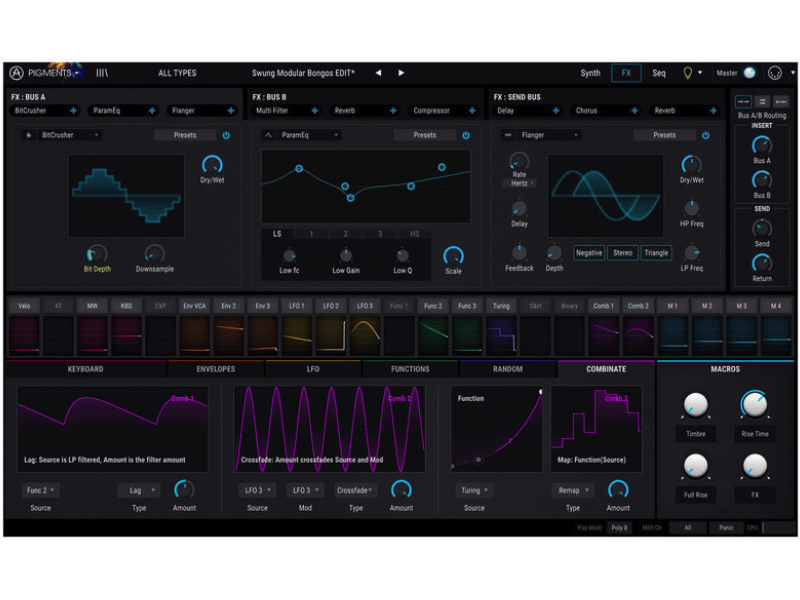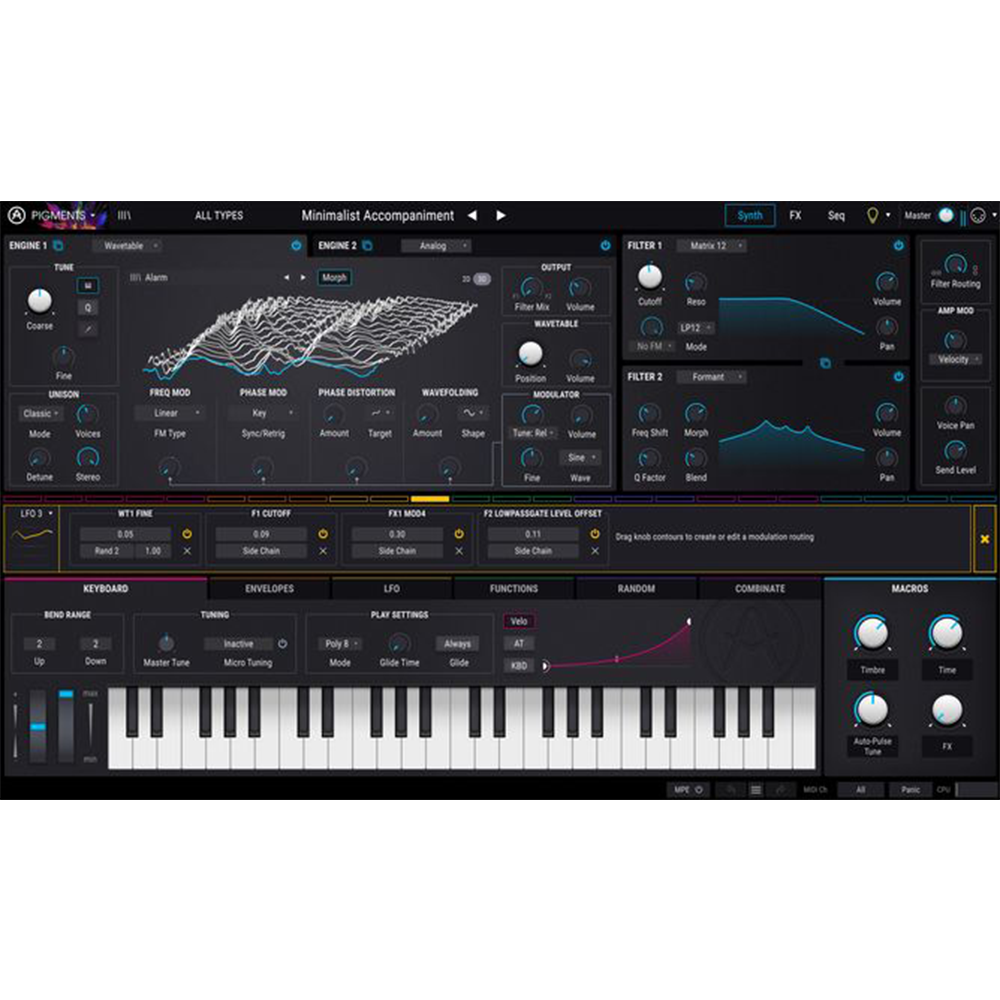

Since the test tracks are already rendered, they will always sound the same, but inside my DAW, every time I hit “Play” a new melody is created. Pigments seems like a very capable tool to create generative music. Which, as I understand it, fits the description of generative music. It’s important to note that there’s a lot of great sequencers out there, but what’s interesting about the Pigments one is the randomization feature, which can be locked to a scale and, basically, generate new notes at a predefined interval that can be randomly changed - along with some other parameters, such as velocity and gate - and regenerated into a new pattern every few bars. This can open up a lot of interesting options for sound design or to breathe life into old virtual instruments Pigments includes a MIDI Output so that any of the patterns generated by the Seq/Arp sections can be sent to control any other virtual instrument. Curious by what I saw, I went to the manual and there it was: I actually didn’t know too and discovered it by accident while watching Benn Jordan test Pigments 3 in a live stream some time ago.


This volume goes deeper into our creative experiment with Pigments to inject innovation and imagination into the space in and around electronica, lo-fi, indie pop and contemporary R&B. This volume goes deeper into our creative experiment with Pigments to inject innovation and…Įxperience music in full technicolour with a collection of presets for Arturia Pigments and add a new spectrum of depth, inspiration and colour to your musicĮlectronica2 for Arturia Pigments is a follow up to our first pack of the same name.

Experience music in full technicolour with a collection of presets for Arturia Pigments and add a new spectrum of depth, inspiration and colour to your music Electronica2 for Arturia Pigments is a follow up to our first pack of the same name.


 0 kommentar(er)
0 kommentar(er)
